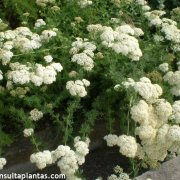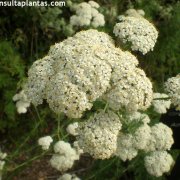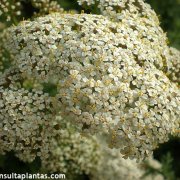Care of the plant Achillea abrotanoides or Yarrow |
|
The Achillea genus, of the Asteraceae family, inludes about 150 species of plants native to Asia, Europe and North America. Some species are: Achillea abrotanoides, Achillea moscata, Achillea millefolium, Achillea umbellata, Achillea clypeolata, Achillea coarctata, Achillea tomentosa, Achillea virescens. Common name: Yarrow. This species is native to the Balkans. They are perennial herbaceous plants that extend through stolons; they reach 40 cm (1.31 feet) in height. The leaves are alternate, pinnatifid or bipinnatifid, woolly in appearance and grayish green. They produce attractive inflorescences filled with small white flowers. They bloom in summer. Yarrow is used in rockeries, in low maintenance dry areas, to cover slopes, on edges and in pots. The Achillea abrotanoides prefers direct sun exposure although it can be grown in light shade. They can withstand some light and sporadic frost. Yarrow can be grown in any type of soil but prefer a well-drained one such as a garden substrate with 50% coarse sand. Achillea abrotanoides has a high resistance to drought so some watering will be sufficient during the hottest time of the year. Yarrow does not need fertilization. It's advisable to prune the withered inflorescences after flowering. It is also advisable to monitor its expansion as it could be invasive over time. The main enemy of these plants is the excess of irrigation that causes fungal diseases. Propagation can be done by division or from seeds sown in spring in a pot; take 2-3 weeks to germinate. |
Images of the plant Achillea abrotanoides or Yarrow |
Find plants
Achillea abrotanoides or Yarrow | Care and Growing
© 2025 FavThemes


